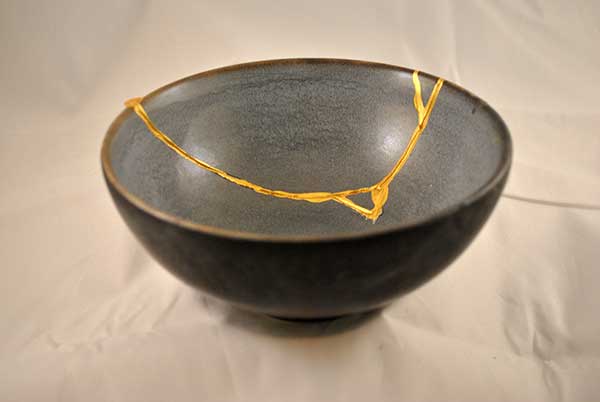Yesterday, on a friend’s suggestion, I read a poem called ‘On the Art of Kintsugi‘ by Ruth Padel. And then to understand it better, researched the pottery craft the poem was inspired by.
Kintsugi, I learnt is a Japanese art/craft of fixing pottery and ceramic vessels. But it is no ordinary technique. It uses a gold based compound to fix such vessels, thus greatly increasing the value of the object owing to its imperfection. The method espouses an underlining philosophy that the signs of breakage of the vessel be treated as celebratory of its history and not something to hide.
The philosophy contrasts starkly with how most of us live our lives. How many of us would actually have the courage to embrace our regrets and see life as a bitter sweet journey? All of us hold the sweet memories closest to our hearts. But how many of us would have the courage to be proud of the scars, the broken parts of our being and the fact that we survived it all to tell the tale?
Just take a moment to think about it. Don’t our lives resonate with the broken pots? Call it accidents, fate, destiny, or whatever you will, we have been shattered now and then with impacts that we consider life altering. Inevitably, we all eventually learn to pick up the pieces and move on. But how many of us would adorn ourselves with our brokenness and realize the beauty of all the experiences that led us to wherever we are right now? Scars of time on our being teach us a lot over time. They are not symbols of imperfection but a reminder that you are alive, resilient and strong. It’s a life lesson, a trophy given by experience, a mark of history. All we need is the gold dust of acceptance and appreciation of our journey and quite like the pots, the so called scars soon become the most beautiful adornment of our being.
Srishti is a lawyer by profession and a blogger by choice. She writes at Law Schools Terrace.






